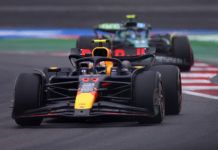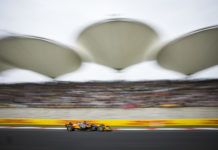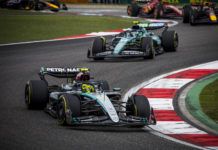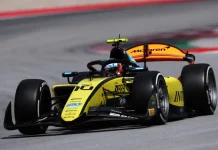Mercedes technical chief James Allison has explained their F1 Bahrain GP strategy with the hard tyres and human error which cost Valtteri Bottas.
Mercedes were one of the few F1 teams in Bahrain GP to have brand new sets of hard tyres at their disposal for the grand prix. The initial notion from commentators was for a three-stop but Allison explains that was not the idea with their aggressive stops.
Allison notes that they opted for early stops keeping two stops in mind and not three. I think probably this might have been a sort of in the minds of some of the commentators as they were watching the race, when we made our second stop because there was still, I think, 28 laps to go at that point and they thought this team looks like it is setting up for a three stop race but the honest answer is absolutely no.
“Three stop would have been instant death at that track, far, far too slow a strategy. We were just making the absolute maximum of what the Hard tyre could offer us, and three stops was never something that we considered,” explained Allison in a debrief video, as he added about the reasoning behind two sets of hard, instead of one medium and hard.
“The honest answer is that this is a very finely balanced decision,” started Allison. “There isn’t, like, one of them is a no brainer, the other one is a completely moronic choice. It’s a matter of not taste, but each one has a slight advantage over the other in certain circumstances. So, the Medium tyre all things being equal will be slightly faster over a certain number of laps, but it will die sooner.
“It will eventually degrade and fall off a cliff sooner than the Hard. The Hard tyre is just a whisker slower but it will be fairly bulletproof for a large number of laps. So, those two different characteristics give you different options. We judged, and you have to remember we were only at this track a few months ago in 2020, we judged that the pace difference between the Hard and the Medium was going to be sufficiently small that we valued the increased life a little higher than we valued that shade of extra pace that the Medium tyre gave you.
“And we intended to use that extra life to make us, to put ourselves in a position where we could be brave at the point where we did our stops. We know in Bahrain that it is one of the tracks that has the most powerful undercuts. You need only to get within about two seconds of the car ahead and if you stop one lap sooner then you can jump past using an undercut.
“Now, if you know that what you have got tucked up in the garage is a nice set of unused Hard tyres and you know that that set of tyres can go deep, deep into the race then it gives you the confidence to make that undercut move, to dive in the pits and stop really quite early in the race and to hopefully use that undercut to jump past.
“If you are sitting on a Medium tyre with someone hard up behind you and you are worried that they are going to undercut you, but all you know is you’ve got Mediums in the garage, then you are nervous about diving in the pits too early in the race because you know that your tyres maybe are going to struggle if they have to run too long a stint.
“So, we placed the value on the stint length and it was that that we then used in the race, admittedly in quite an extreme way, to make sure that we used the length of the stint to our advantage and it was that that allowed us to first undercut and then protect against an undercut having seized the lead with that very, very aggressive early stop and long final stint that Lewis did to hold on for the win. So, it is a matter of taste, a matter of choice but we chose it for those reasons and then we exploited that opportunity to sneak a win in a very, very closely fought race,” summed up Allison.
The big talking point towards the end of the F1 Bahrain GP became the botched stop of Bottas, which Allison noted happened due to human error. It set the Finn back while he was on the recovery road, catching Lewis Hamilton and Max Verstappen ahead, just prior to the stop. It was another troubled situation for him despite showing better pace.
“When the car came into the pit stop box, Valtteri came in very neatly, positioned the car neatly and well, which is always a help for the pit crew, but sadly one of the gun men went onto the wheel, started to disengage the nut, loosened the nut but then started to withdraw the wheel gun just a little bit too soon before the nut had spun off its thread,” said Allison.
“Because it was still offering some resistance at that point, as he withdrew the wheel gun, the socket on the wheel gun started to disengage from the nut and then started to spin round, we call it machining the nut because it starts to chip away at the edges of the nut and destroy the nut, a bit like when you are using a screwdriver and you don’t have it lined up properly, and you start to sort of damage the screwdriver slot.
“So, as he pulled away the gun machined away at the nut and it didn’t actually come off its mountings. He went back in to deal with it but the gun recognises or is designed to recognise when it has done a gunning off action and it automatically shuttles the gun so that it is then in doing up mode and so when he went back on to finish the job of taking the wheel nut off, the gun is now in doing up mode and instead of undoing the nut, it is doing it up again and the subsequent sort of follow on mess of that is what causes something which is normally a beautiful two-second pit stop, causes it to then collapse into something that haemorrhages lap time and seconds in the pit lane.
“But all of it was caused by that initial misplacing of the wheel gun, machining the nut as the wheel gun came off,” summed up Allison, as he then went on to clear that they were not planning to use Bottas as a traffic in between Hamilton and Verstappen. Their idea was to get him in second via strategy and pace, rather than make him a holding guy.
“The stop lap that we chose for Valtteri was the lap that gave Valtteri his best chance of getting past Max,” said Allison. “Valtteri had a nice set of Hard tyres in the garage, as did Max, but the Red Bulls had shown some nervousness about making long stints. They had stayed out on the track when Lewis had managed to undercut them earlier in the race. And so, we knew that by stopping Valtteri when we chose, we would present Max with a dilemma.
“After a couple of laps of Valtteri being on those new tyres, if he had a good pit stop, he would have already been threatening Max for the undercut. Max would have had to come in to protect against Valtteri and that would have allowed Valtteri to be right up against Max and able to fight with him for position. If Max had continued to show the sort of nervousness that Red Bull had exhibited about doing long stints, then it would have allowed Valtteri to get past him with an undercut if Max chose not to cover him and that would have placed Valtteri ahead of Max on the road and with the same sort of chance that Lewis had of defending against Max later in the race.
“So, the time when we chose to stop Valtteri would have given Valtteri his best chance of getting in front of Max. It didn’t work out of course because the pit stop was too slow and that is a very sad thing for Valtteri, who had shown extremely good pace up to that point in the race and then showed good pace afterwards recovering from that slow pit stop and finally taking the fastest lap of the race as a consolation. So, it’s a shame he didn’t get a chance to show how that strategy would have unfolded,” summed up Allison.
Here’s FIA pinning Valtteri Bottas for first thorough check
Here’s Valtteri Bottas spending time at Pelicans
Here’s Lewis Hamilton, Max Verstappen how relaying Bahrain GP went
Here’s Valtteri Bottas on his stop and Toto Wolff’s reaction
Here’s Turn 4 saga situation with Lewis Hamilton, Max Verstappen, Toto Wolff, Christian Horner, Michael Masi



















